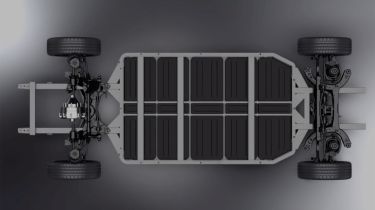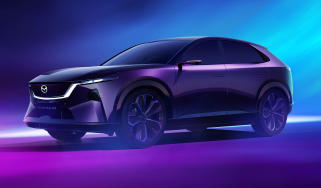Mazda gears up to launch three new electric cars by 2025
After 2025 Mazda will roll-out its new Skyactiv EV Scalable Architecture, which allows different-sized cars to be built on the same production line

Mazda is set to expand its electric car line-up – but it won’t be throwing it’s full weight behind the technology just yet. The company says it plans to launch three new EVs by 2025, all of which will be built on the company’s existing electric technology.
Then, Mazda will launch its new, dedicated Skyactiv EV Scalable Architecture in 2025. The underpinnings feature a bolt-in panel for the centre of the chassis, which can stretch out the platform’s wheelbase and increase its battery capacity in one fell swoop.
So, in theory, a dinky electric hatchback could roll down the same assembly line as an enormous SUV, which is considerably more efficient from a manufacturing perspective.
Mazda hasn’t confirmed any performance specifications for the new platform, although the company has hinted that it plans to use it with its “small product group” first. That means we could soon get a new EV that’s about the same size as the Mazda 3 or the CX-30.
Despite all this investment in electric technology, Mazda still hasn’t given up on the internal combustion engine. The firm has plans to launch five new hybrid cars and five new plug-in hybrids by 2025 – and the firm promises that its next-generation petrol and diesel engines will offer lower CO2 emissions, lower NOx emissions, better fuel economy and more power.
These new cars will continue to be built on Mazda’s Skyactiv Multi-Solution Scalable Architecture, and buyers will have a choice of 24V or 48V mild-hybrid powertrains (with the former being reserved for smaller vehicles and the latter for larger cars), plug-in hybrid technology and even a rotary-powered range-extender system.
Mazda is even working on some new straight-six petrol and diesel engines, specifically designed for its larger cars, such as the upcoming CX-60 and CX-80 SUVs. They’ll be built using the brand’s lean-burning Skyactiv-X technology and feature 48-volt electrification. Both of these SUVs are expected to hit the market in 2023.
The company has also joined the eFuel alliance to help promote and develop renewable synthetic fuels. This could provide a method for Mazda to reduce the CO2 emissions of its entire fleet without the need for any enormous infrastructure changes, as the fuel could be dispensed from a conventional forecourt.
Currently, Mazda is investigating synthesized fuels made from carbon which has been pulled out of the atmosphere by giant filters, in a similar fashion to Porsche’s e-fuel efforts. The carbon is then combined with hydrogen in just the right mix to give it exactly the same properties as conventional petrol and diesel, without introducing any new carbon to the air.
Mazda is also working on biodiesel fuels that are made from sustainable raw materials such as micro algae fats and used cooking oil. Importantly, these raw materials don’t compete for land space with the human food supply, which is normally the case with biodiesel fuels.
All of this innovation will help Mazda meet its climate targets. The company’s ambition is to reduce its CO2 emissions by 50 percent over 2010 levels by 2030. Mazda also plans for complete carbon neutrality across every element of its business by 2050. This is a growing trend for the world’s car manufacturers with Polestar and Volvo making similar pledges earlier this year.
By 2030, the company expects 25 percent of its sales to come from electric vehicles, with the remaining sales stemming from electrified combustion vehicles. Mazda says this is a global average, however, and that European and UK sales are forecast to have significantly higher EV sales by the end of the decade.
Find a car with the experts








